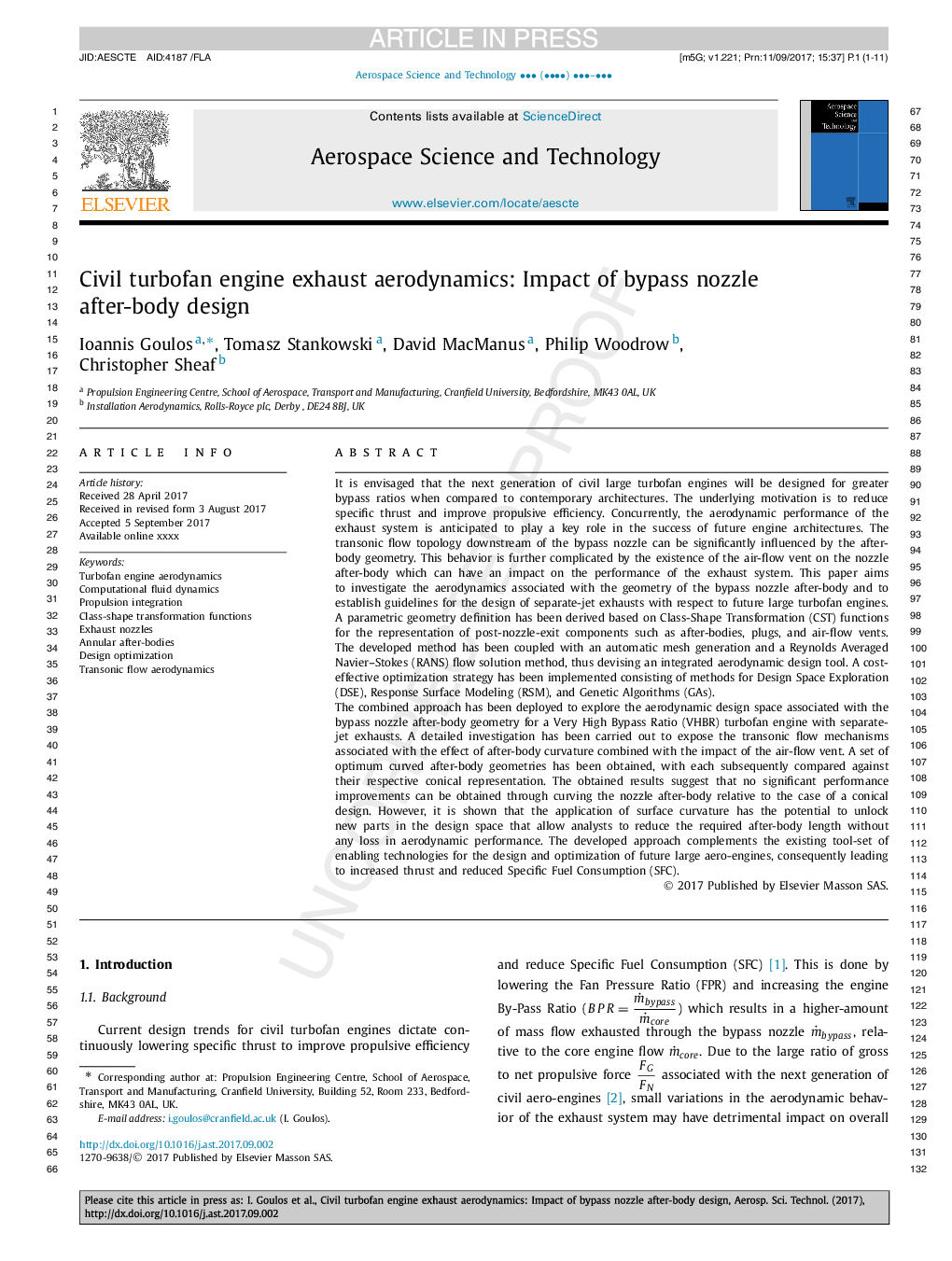| Article ID | Journal | Published Year | Pages | File Type |
|---|---|---|---|---|
| 8058098 | Aerospace Science and Technology | 2018 | 11 Pages |
Abstract
The combined approach has been deployed to explore the aerodynamic design space associated with the bypass nozzle after-body geometry for a Very High Bypass Ratio (VHBR) turbofan engine with separate-jet exhausts. A detailed investigation has been carried out to expose the transonic flow mechanisms associated with the effect of after-body curvature combined with the impact of the air-flow vent. A set of optimum curved after-body geometries has been obtained, with each subsequently compared against their respective conical representation. The obtained results suggest that no significant performance improvements can be obtained through curving the nozzle after-body relative to the case of a conical design. However, it is shown that the application of surface curvature has the potential to unlock new parts in the design space that allow analysts to reduce the required after-body length without any loss in aerodynamic performance. The developed approach complements the existing tool-set of enabling technologies for the design and optimization of future large aero-engines, consequently leading to increased thrust and reduced Specific Fuel Consumption (SFC).
Related Topics
Physical Sciences and Engineering
Engineering
Aerospace Engineering
Authors
Ioannis Goulos, Tomasz Stankowski, David MacManus, Philip Woodrow, Christopher Sheaf,
